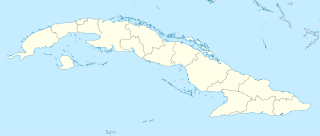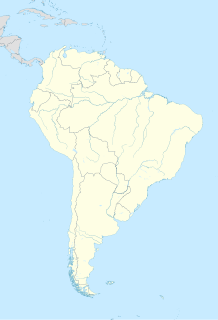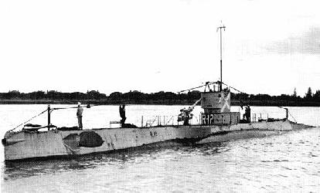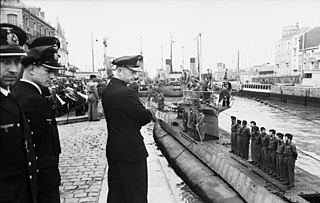 W
WSS Alcoa Puritan was a cargo ship in the service of Alcoa Steamship Company that was torpedoed and sunk in the Gulf of Mexico during World War II.
 W
WMV B. P. Newton was a Norwegian tanker built in 1940, and sunk by German submarine off South America in July 1943.
 W
WHMS Castle Harbour was a civilian harbour vessel of 730 tons that was taken-up from trade (TUFT) during the Second World War by the Royal Naval Dockyard in Bermuda for use by the Royal Naval Examination Service and later armed and commissioned as a warship, providing harbour defence from submarines.
 W
WEmpire Amethyst was an 8,032-ton tanker which was built in 1941. She was torpedoed and sunk by German submarine U-154 on 13 April 1942.
 W
WEmpire Bede was a 6,959 GRT cargo ship which was built by G M Harland & Wolff Ltd, Glasgow in 1942 for the Ministry of War Transport (MoWT). She had a short career, being damaged by a torpedo and then sunk by gunfire on 18 August 1942.
 W
WEmpire Buffalo was a 6,404 GRT Design 1105 cargo ship which was built in 1919 as Eglantine by Skinner & Eddy for the United States Shipping Board (USSB). She was sold in 1933 to the Lykes Brothers-Ripley Steamship Corporation. In 1940 she was sold to the Ministry of War Transport (MoWT) and renamed Empire Buffalo. She was torpedoed and sunk by U-125 in 1942.
 W
WEmpire Cloud was a 5,969 GRT cargo ship which was built in 1940 by William Pickersgill & Sons Ltd, Sunderland for the Ministry of War Transport (MoWT). She was torpedoed on her maiden voyage, but repaired and returned to service. In 1942, she was torpedoed and sank whilst under tow to port.
 W
WEmpire Cromwell was a 5,970 GRT cargo ship that was built in 1941 by William Pickersgill & Sons Ltd, Sunderland, Co Durham, United Kingdom for the Ministry of War Transport (MoWT). She was torpedoed and sunk off Trinidad on 28 November 1942 by U-508.
 W
WEmpire Explorer was a 5,985 GRT cargo ship that was built as the cargo liner Inanda in 1925 by Swan, Hunter & Wigham Richardson Ltd, Newcastle upon Tyne, Northumberland, United Kingdom for a British shipping line. She was hired by the Royal Navy in 1940 for use as an ocean boarding vessel but was sunk in an air raid London in September 1940. She was salvaged, rebuilt as a cargo ship, passed to the Ministry of War Transport (MoWT) and renamed Empire Explorer. She served until 9 July 1942, when she was torpedoed and sunk by U-575 in the West Indies.
 W
WThe Erie class gunboats were a class of gunboats built by the United States prior to World War II. The class was designed in 1932, and commissioned into the United States Navy in 1936: Erie (PG-50) and Charleston (PG-51). The Eries had a design speed of 20 kn and a main armament of four 6-inch (152 mm) guns in single mounts with four 1.1-inch (28 mm) quadruple mount anti-aircraft guns.
 W
WUSS Erie (PG-50) was the lead ship of the Erie-class gunboats of the United States Navy. Erie was the second US Navy ship to bear the name. The first, Erie, was named after Lake Erie, while this Erie followed the US Navy naming practices of gunboats, like cruisers, being named after US cities.
 W
WUSS Muscatine (ID-2226) was a Norwegian refrigerator ship obtained by the U.S. Navy from the United States Shipping Board (USSB) during World War I. She served for the duration of the war, carrying "beef and butter" for military personnel in Europe.
 W
WUSS R-12 (SS-89) was an R-class coastal and harbor defense submarine of the United States Navy.
 W
WSurcouf was the largest French cruiser submarine. She served in both the French Navy and the Free French Naval Forces during the Second World War. She was lost during the night of 18/19 February 1942 in the Caribbean Sea, possibly after colliding with an American freighter. Surcouf was named after the French privateer Robert Surcouf. She was the largest submarine built until surpassed by the first Japanese I-400-class submarine in 1944.
 W
WUSS Texan (ID-1354) was a United States Navy cargo ship and troop transport in commission from 1918 to 1919.
 W
WGerman submarine U-94 was a Type VIIC U-boat of Nazi Germany's Kriegsmarine during World War II. She was laid down on 9 September 1939 at the F. Krupp Germaniawerft in Kiel as yard number 599, launched on 12 June 1940 and commissioned on 10 August 1940 under Kapitänleutnant Herbert Kuppisch.
 W
WGerman submarine U-153 was a Type IXC U-boat of Nazi Germany's Kriegsmarine built for service during World War II. The keel for this boat was laid down on 12 September 1940 at the DeSchiMAG AG Weser yard in Bremen, Germany as yard number 995. She was launched on 5 April 1941 and commissioned on 19 July under the command of Korvettenkapitän Wilfried Reichmann.
 W
WGerman submarine U-162 was a Type IXC U-boat of Nazi Germany's Kriegsmarine during World War II.
 W
WUSS Warrington (DD-383) — a Somers-class destroyer — was the second ship of the United States Navy to be named for Lewis Warrington, who was an officer in the Navy during the Barbary Wars and the War of 1812. He also temporarily served as the Secretary of the Navy.
 W
WWheatland Montana was a steam cargo ship built in 1919 by Skinner & Eddy of Seattle for the United States Shipping Board as part of the wartime shipbuilding program of the Emergency Fleet Corporation (EFC) to restore the nation's Merchant Marine. The freighter spent the majority of her career in the Pacific connecting the West Coast of the United States with the Chinese and Japanese ports in the Far East. Early in 1928 the ship together with six other vessels was sold by the Shipping Board to the Tacoma Oriental Steamship Co. and subsequently renamed Seattle. After her owner declared bankruptcy early in 1937, the freighter was sold to Matson Navigation Company and renamed Lihue. She was then mainly employed to transport sugar and canned fruit from the Hawaiian Islands to the ports on the East Coast of the United States. In February 1942 she was chartered to transport general cargo and war supplies to the Middle East but was torpedoed by U-161 in the Caribbean Sea on February 23, and eventually sank three days later while in tow without loss of life.